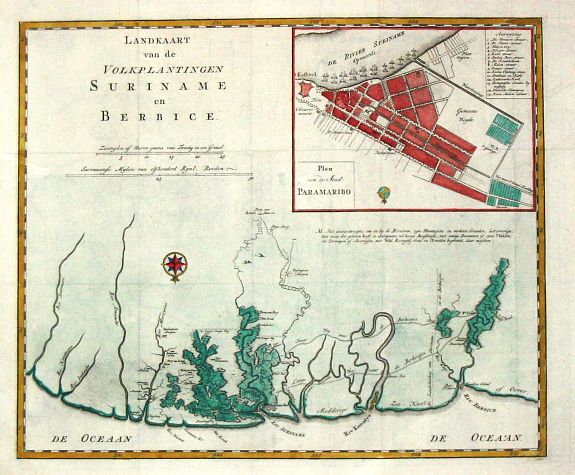 |
| Map of Surinam c. 1750. <http://www.swaen.com/os/Lgimg/19742.jpg> |
Suriname is now a country on the North Coast of South America, and was a Dutch colony before independence was declared in 1975. Historically, it was the British colony of Surinam until surrendered to the Dutch in
1667 by the Treaty of Breda, in exchange for New Amsterdam, later New York, in North America. When Aphra Behn published Oroonoko in 1688, she had apparently spent some time around 1664 in the British colony at
Parham Hill and St. John's Hill, two plantations belonging to Sir Robert Harley. This makes her unique, along with Equiano, in having personal knowledge of the West Indies of which she wrote. Historically, Surinam was a profitable sugar colony, during both Dutch and English periods.
 |
| Suriname today. <https://www.cia.gov/library/publications/the-world-factbook/graphics/maps/newmaps/ns-map.gif> |
|
|
Unlike most of the islands of the Caribbean, the mainland country of Suriname is huge, 63,251 square miles. By comparison, Jamaica, the largest of the islands mentioned in our texts, is only about 43,000 square miles. Barbados covers approximately 166 square miles, and St. Kitts only 65. Suriname's principal industries are now mining and oil.
A modern historical novel which details plantation and town life in the Dutch/Jewish colony of Suriname in the 18th century is
The Cost of Sugar, written by Dame Cynthia McLeod, born and educated in Suriname, daughter of first President and wife of Surinamese ambassador Donald McLeod. McLeod researched and wrote other historical novels and taught Dutch language and literature in Surinam for years. She now lives in Surinam.


